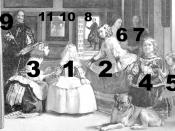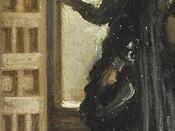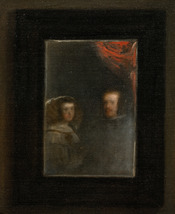Back in 1656, during the Spanish Golden Age, a young man in King Philip IVÃÂs court, named Diego Velázquez, created a painting that, IÃÂm sure, he did not expect to be called ÃÂthe philosophy of artàby a 19th century artist.
Other artists and scholars have said a whole lot of things about VelázquezÃÂs painting, Las Meninas, since he created it, actually. More recently (Honour and Fleming, 1982), it has been described as "Velázquez's supreme achievement, a highly self-conscious, calculated demonstration of what painting could achieve, and perhaps the most searching comment ever made on the possibilities of the easel painting.àAnd because of this, as Annemarie Sawkins says, the originally called Portrait of the Royal Family, has inspired countless artists to also achieve what his painting has said to achieve.
I donÃÂt have much background in art or such to contradict or maybe even agree with these people.
Though I do understand the immensity of influence Las Meninas has stirred up. I would personally nod along with how Honour and Fleming put it: ÃÂa calculated demonstration,àfor that is what always amazes me with these kinds of works of art. The princess Infanta Margarita is obviously set in the somewhat front of the scene, surrounded by her gal pals, but the mirror at the back of the painting includes the king and queen, truly making it a portrait of the royal family. And I find it oh-so amusing how Velázquez himself was able to insert his own portrait in this work.
As most critics have called this work, it is a snapshot. A snapshot of a candid moment where there have most likely been events and dealings that led that moment to exist. Just like in everyday life, in every scene of our world, there are different faces...


